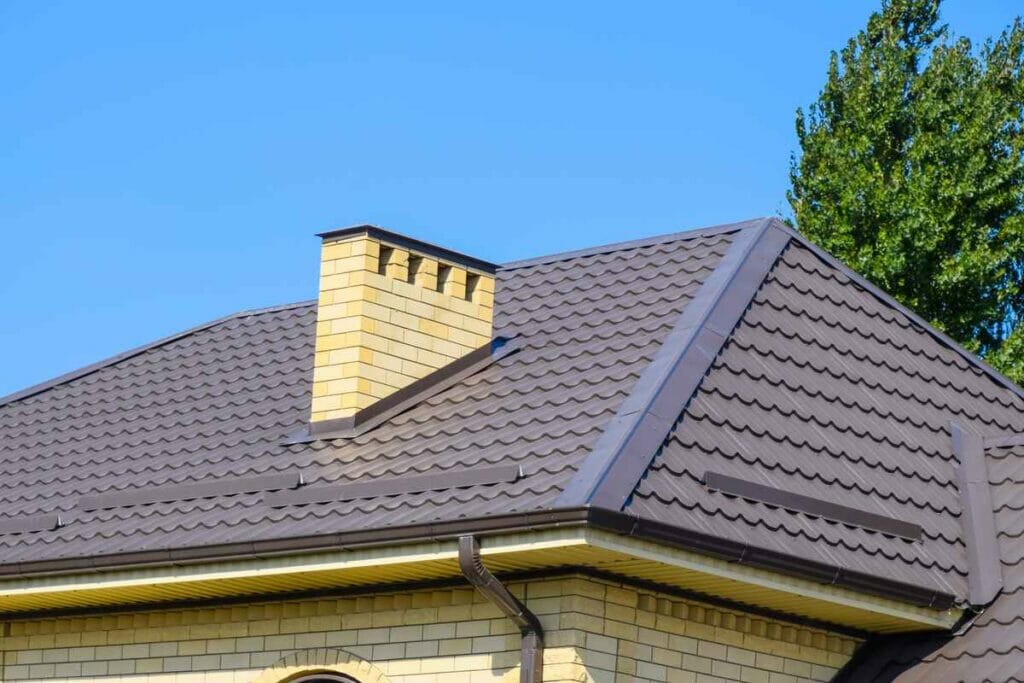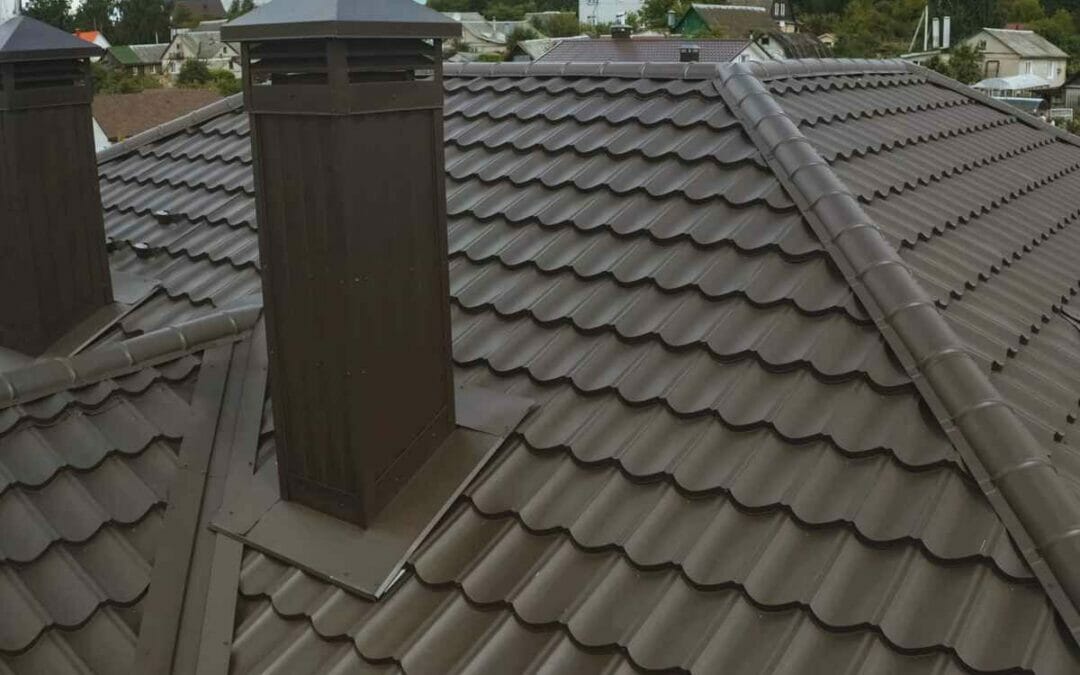Depending on the complexity of your roof, you may also have valleys, dormers, and any number of features that require flashing to properly shed rainwater. Neglected or overlooked flashing components are often the most vulnerable and leak-prone areas on a roof. The good news is that most roofs can be taken apart in areas around metal flashings and the metalwork can be replaced or reworked to prevent these leaks.

Basic Types of Roof Flashing
- Vent Boot: Also a vent pipe cover, is traditionally a lead or metal sleeve that fits over the top of a vent pipe penetration on a roof to help seal the section of roof around the pipe from water penetration.
- Valley Flashing: Metal or sometimes peel-and-stick material that protects an important area on the roof where two slopes come together to form a valley. Properly sized and installed valley flashing is key to channeling water safely off the roof.
- Ridge Cap: The piece of roofing that covers the peak or ridge of a roof. These are often a type of specialized shingle, tile, or fabricated metal specifically designed to aid in shedding water and debris. Because this is located at the very peak of the roof, only a small amount of water will hit the ridge through rainfall, unlike areas lower on the roof which will carry much higher volumes of runoff.
- Step Flashing: Small metal rectangles that are installed shingle fashion at the intersection between a roof and wall to prevent water intrusion into both the roof and wall and channel water back out onto the roof and safely off the house.
- Cricket: A framed-out, triangular structure that is built on top of an existing flat or pitched roof. Its design directs water away from these trouble spots to avoid leaks. Because of their sharp change of angles areas like chimneys and dormers or other large penetrations into a roof work best with a cricket.
Roof Flashing Materials
In the past, roofing professionals would use lead, or lead-coated materials, as flashing. Roofing professionals in North America now prefer other materials:
- Aluminum: Aluminum flashing is easy for roofing professionals to form and is lightweight. However, aluminum must be coated if it is to be used with concrete and masonry, as plain aluminum reacts and degrades when it touches alkaline surfaces. In coastal areas, the aluminum flashing should be coated even if it does not contact concrete or masonry, to prevent corrosion.
- Copper: Copper roof flashing is also malleable and takes soldering well. It’s also highly durable and has a long life. On the other hand, it does discolor into a patina, which some homeowners dislike, but others favor. You will still routinely find copper flashing around chimneys.
- Steel: Steel is usually the material of choice for flashing. It’s malleable, has aesthetic value and, when galvanized, is corrosion-resistant.
- Modified bitumen roofing tape: Modified bitumen is a watertight, tough material. When made into tape, it can be used to aid roof flashing. The specific tape you use will have to be approved by your building code and of a certain width.
When to Repair a Roof Flashing Leak
You might also wonder what damaged flashing looks like and when it should be replaced. Check over your flashing and look for:
- Damage, holes, or bending.
- Corrosion or rusting.
- Loose or missing nails.
- Dried out or missing sealant.
- Flashing that has come loose.
If you find any of these problems, you may need to replace the flashing.
Conclusion
Though roof flashing isn’t the most dramatic element of a roof, it is one of the most important. If you find some flashing on your residential roof that you’re concerned about, we suggest you contact a professional roofer like Port Orchard Roofing. A professional can help you solve all of your roof flashing problems or answer the questions you have about your specific roof.




 (360) 649-7801
(360) 649-7801
